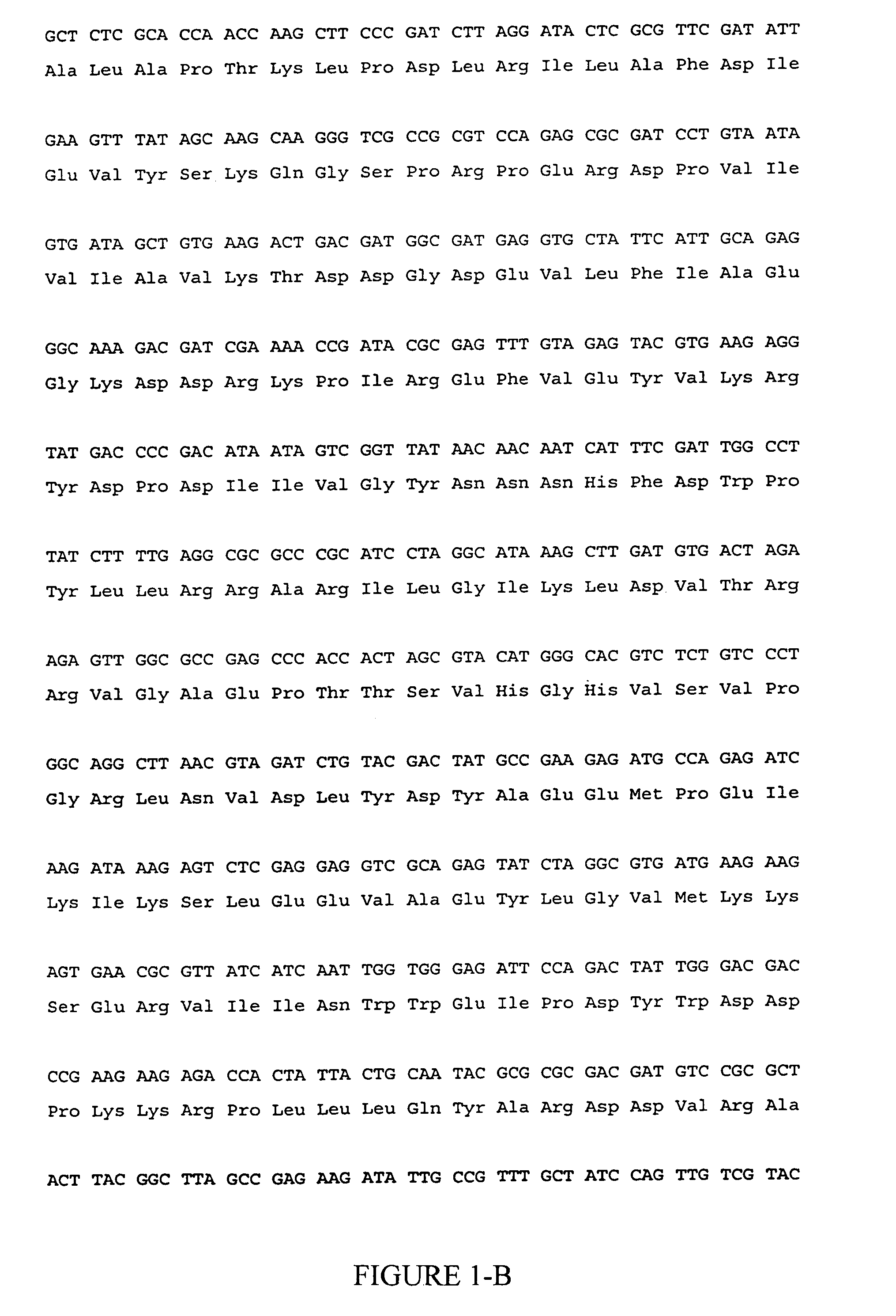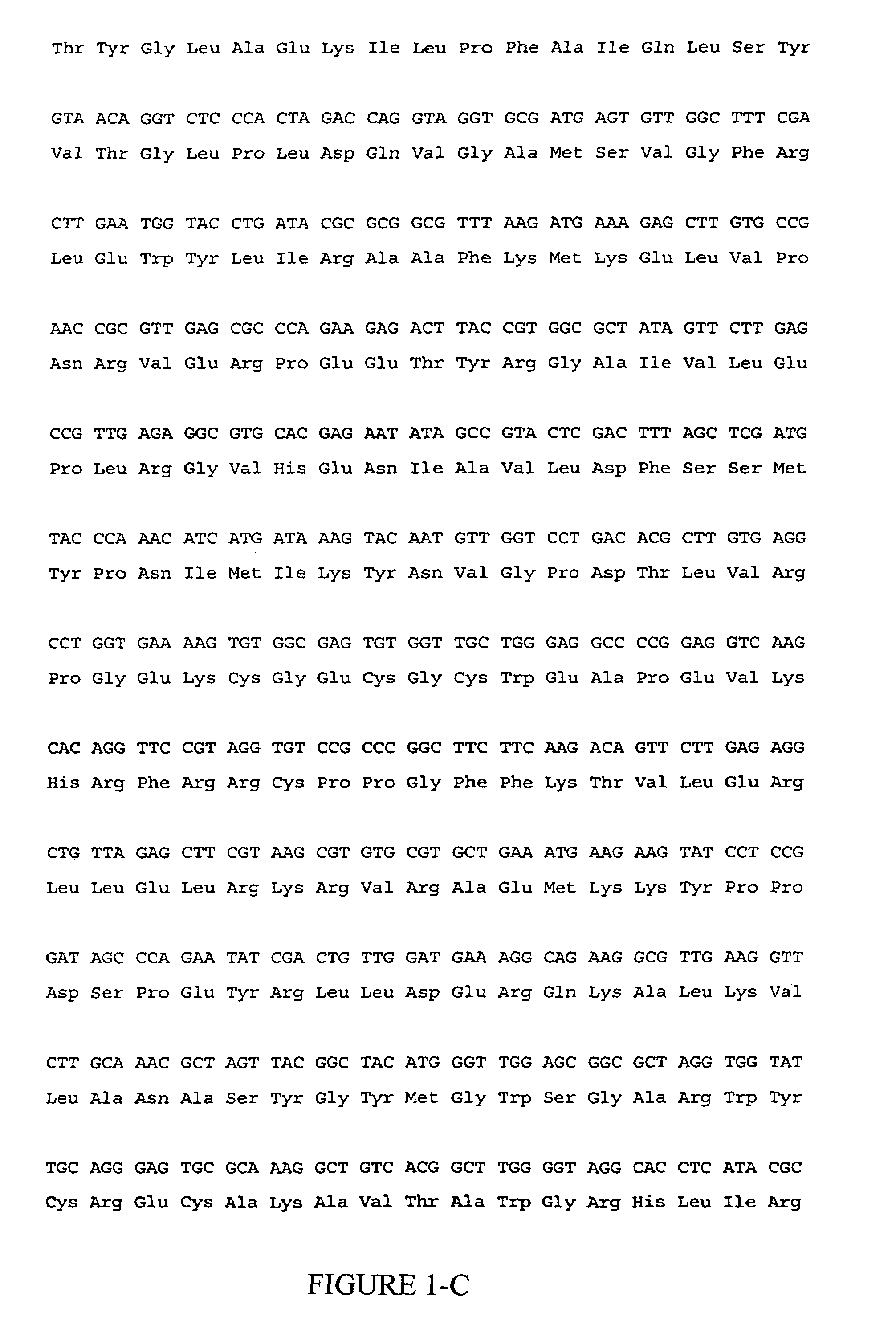Enzymes having high temperature polymerase activity and methods of use thereof
a technology of enzymes and polymerase, applied in the field of enzymes with high temperature polymerase activity, can solve the problems of difficult culture of extreme hyperthermophilic microorganisms, extreme fragility of i>pyrodictium/i>species, and the difficulty of standard bacterial fermentation techniques for culturing i>pyrodictium/i>
- Summary
- Abstract
- Description
- Claims
- Application Information
AI Technical Summary
Benefits of technology
Problems solved by technology
Method used
Image
Examples
example 1
[0267]Optimization tests were conducted to determine the most favorable conditions for utilizing the DNA polymerase of SEQ ID NO: 2 for polymerase activity in PCR at temperatures in the range from 85° C. to 95° C. The parameters tested were buffer, pH, salt and salt concentration, Mg ion source, detergent and detergent concentration.
[0268]The buffers tested were Tris-HCl, Tris-HOAc, phosphate buffer, Bicine, HEPES, MOPS, and TAPS. The most ideal buffer was Tris HCl.
[0269]The pH range tested was from 7.5 to 10.0. The most ideal pH was 10.0.
[0270]The salts tested were NaCl, NaOAc, KCl, (NH4)2SO4, NH4OAc, and LiCl at concentrations from 5 mM to 200 mM. The most favorable salt was 25 mM NaOAc.
[0271]The magnesium ion sources tested were MgCl2, Mg(OAc)2, MgSO4 at concentrations from 0.5 mM to 5 mM. The most favorable of these was 2 to 2.5 mM Mg(KOAc)2.
[0272]The detergents tested were NP-40, Tween-20®, and Triton X-100® detergents at concentrations of 0.001T to 0.5% by volume. The best con...
PUM
| Property | Measurement | Unit |
|---|---|---|
| temperature | aaaaa | aaaaa |
| temperatures | aaaaa | aaaaa |
| depth | aaaaa | aaaaa |
Abstract
Description
Claims
Application Information
 Login to view more
Login to view more - R&D Engineer
- R&D Manager
- IP Professional
- Industry Leading Data Capabilities
- Powerful AI technology
- Patent DNA Extraction
Browse by: Latest US Patents, China's latest patents, Technical Efficacy Thesaurus, Application Domain, Technology Topic.
© 2024 PatSnap. All rights reserved.Legal|Privacy policy|Modern Slavery Act Transparency Statement|Sitemap



